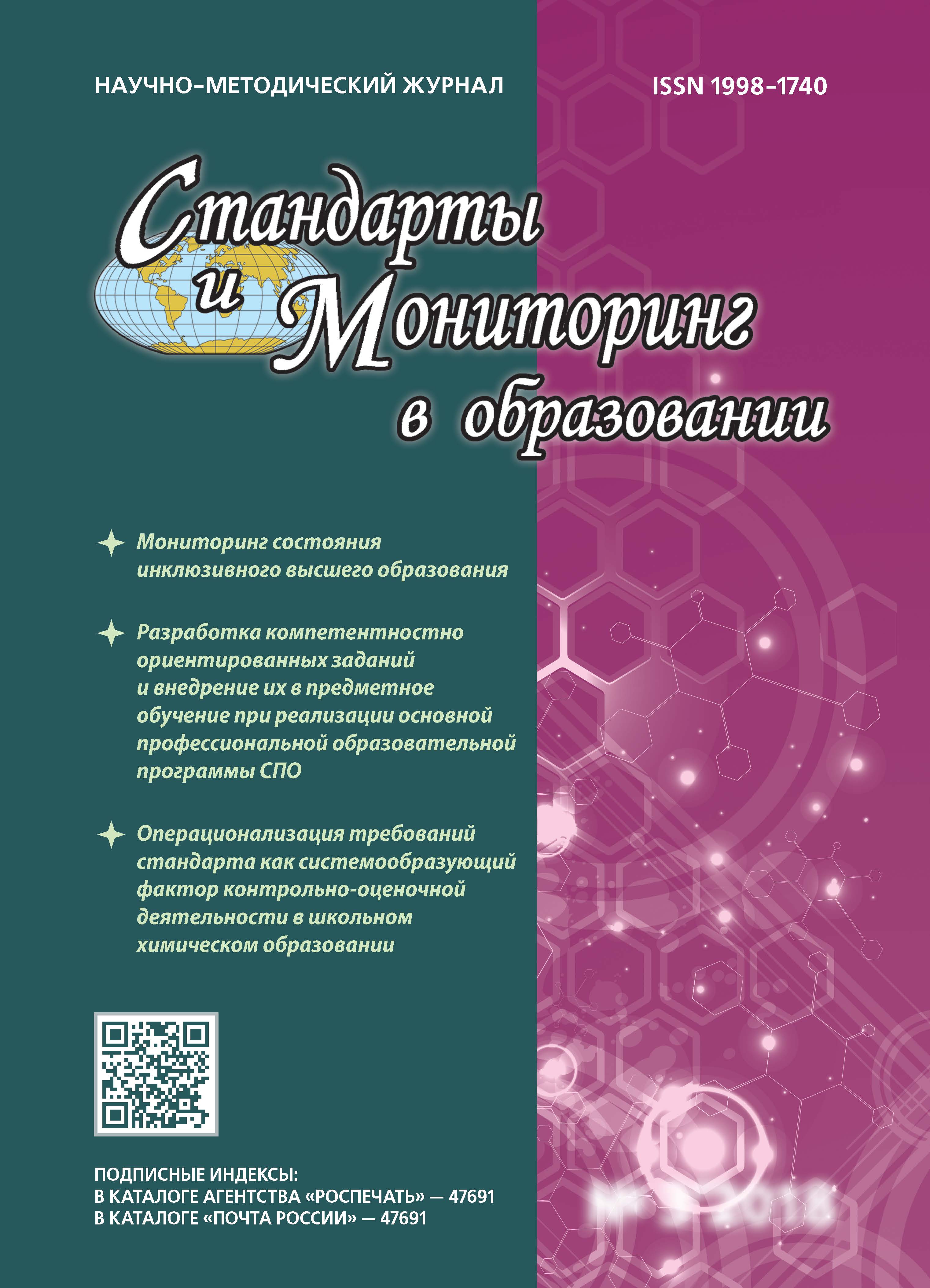Moskva, Moscow, Russian Federation
Moskva, Moscow, Russian Federation
The article reviews the domestic and foreign blended learning models which are used in contemporary schools. The history of blended learning development in foreign, in particular, American and Russian educational environments is considered. Moreover, the authors examine the main existed approaches to determining the concept of blended learning, the developed classifi cations of blended learning models, as well as the activities devoted to its development and expansion.
blended learning, contemporary school, alternative approaches to teaching, online teaching, face-to-face teaching.
Сегодня современная школа переживает, пожалуй, один из наиболее интенсивных периодов своего реформирования.
1. Andreeva N.V., Rozhdestvenskaya L.V., Yarmakhov B.B. Shag shkoly v smeshannoe obuchenie [Step of the school in mixed education]. Moscow, Buki Vedi Publ. 2016.
2. Efremov K. Trud i deti - novye otnosheniya [Labor and children - a new relationship]. Vospitatel’naya rabota v shkole [Educational work in school]. 2007, I. 6, pp. 25-30.
3. Itogi proekta «Aprobatsiya kompleksnogo elektronnogo obrazovatel’nogo produkta «Mobil’naya Distantsionnaya Shkola» [Results of the project “Approbation of a comprehensive electronic educational product”]. Obrazovatel’nyy resurs «Mobil’naya elektronnaya shkola» [Mobile Distance School “. Educational resource «Mobile e-school»]. Available at: http://media.wix.com/ugd/c87fc5_3236328418364103a5b6d260336f9627.pdf
4. Karpacheva K.V., Dem’yanenko N.V. Ispol’zovanie smeshannogo obucheniya v protsesse obucheniya professional’nomu inostrannomu yazyku studentov inzhenernogo profi lya [The use of mixed instruction in the process of teaching a professional foreign language of engineering students]. Molodoy uchenyy [The young scientist]. 2015, I. 13, pp. 644-646.
5. Korchazhkina O.M. Soderzhanie i praktika primeneniya metapredmetnogo podkhoda k smeshannomu obucheniyu [The content and practice of applying a meta-subject approach to mixed learning]. Noginsk, ANALITIKA RODIS Publ., 2017.
6. Sobkin V.S. Transformatsiya tseley i motivatsii ucheby shkol’nikov [Transformation of the goals and motivation of schoolchildren’s learning]. Sotsiologicheskie issledovaniya []. Moscow, 2006, I. 8, pp. 106-115.
7. Titova L.N. Professional’no-orientirovannaya podgotovka budushchikh uchiteley-fi lologov k primeneniyu informatsionnykh tekhnologiy i komp’yuternykh sredstv obucheniya v shkole. Kand. Diss [Professional-oriented training of future teachers of philology for the application of information technology and computer-based learning in the school. Cand. Diss]. Ufa, LN Titova Publ., 2009.
8. Fandey V.A. Smeshannoe obuchenie: sovremennoe sostoyanie i klassifi katsiya modeley smeshannogo obucheniya [Mixed training: the current state and classifi cation of models of mixed learning]. Informatizatsiya obrazovaniya i nauki [Informatization of education and science]. 2011, I. 12, pp. 115-125.
9. Fandey V.A. Teoretiko-pragmaticheskie osnovy ispol’zovaniya formy smeshannogo obucheniya inostrannomu (angliyskomu) yazyku v yazykovom vuze. Kand. Diss [Theoretical and pragmatic basics of using the form of mixed instruction in a foreign language (English) in a language university. Cand. Diss]. Moscow, 2012.
10. Federal’nyy gosudarstvennyy obrazovatel’nyy standart srednego (polnogo) obshchego obrazovaniya (utverzhden prikazom Minobrnauki Rossii ot 17 maya 2012 g. № 413) [Federal state educational standard of secondary (complete) general education (approved by the order of the Ministry of Education and Science of Russia on May 17, 2012 № 413)].
11. Tsaregorodtseva S.V. Rossii nachali ispol’zovat’ tekhnologiyu smeshannogo obucheniya [Russia began to use the technology of mixed education]. Nezavisimoe pedagogicheskoe izdanie «Uchitel’skaya gazeta» [Independent pedagogical publication “Teacher’s newspaper”]. Available at: http://www.ug.ru/article/626. (accessed 10 December 2017).
12. Bonk C. J., Graham C. R. The handbook of blended learning: Global perspectives, local designs. - John Wiley & Sons, 2012.
13. Bonk C. J. et al. Learning from focus groups: An examination of blended learning //International Journal of E-Learning & Distance Education. - 2002. - V. 17. - I. 3. - S. 97-118.
14. Cooney M.H., Gupton P., O’Laughlin M. Blurring the lines of play and work to create blended classroom learning experiences //Early Childhood Education Journal. - 2000. - V. 27. - I. 3. - S. 165-171.
15. Graham C.R. Blended learning models //Encyclopedia of Information Science and Technology, Second Edition. - IGI Global, 2009. - S.375-382.
16. Güzer B., Caner H. The past, present and future of blended learning: an in depth analysis of literature // Procedia-social and behavioral sciences. - 2014. - V. 116. - S. 4596-4603.
17. Horn M.B., Staker H. The rise of K-12 blended learning // Innosight institute. - 2011. - V. 5.
18. Mackey K. Proof points: Blended learning success in school districts. Educational website «Christensen institute» - https://www.christenseninstitute.org/ (Date of reference: 12.12.2017)
19. Mackey K. Proof Points: Blended learning success in school districts. District of Columbia public schools, Washington, D.C. Educational website «Christensen institute» - https://www.christenseninstitute.org/wp-content/uploads/2015/05/DCPS.pdf (Date of reference: 12.12.2017)
20. Mackey K. Proof Points: Blended learning success in school districts. Enlarged city school district of Middletown, New York. Educational website «Christensen institute» - https://www.christenseninstitute.org/ wp-content/uploads/2015/09/Enlarged-City-School-District-of-Middletown.pdf (Date of reference: 12.12.2017)
21. Mackey K. Proof Points: Blended learning success in school districts. Hamilton county community unit school district 10 McLeansboro, Illinois.Educational website «Christensen institute» - https://www.christenseninstitute.org/wp-content/uploads/2015/09/Hamilton-County-Community-Unit-School-District-10.pdf (Date of reference: 12.12.2017)
22. Staker H., Horn M.B. Classifying K-12 blended learning //Innosight Institute. - 2012.
23. Stewart J.M. A blended e-learning approach to intercultural training //Industrial and Commercial Training. - 2002. - V. 34. - I. 7. - Pp. 269-271.
24. Valiathan P. Blended learning models //Learning circuits. - 2002. - V. 3. - I. 8. - Pp. 50-59.






